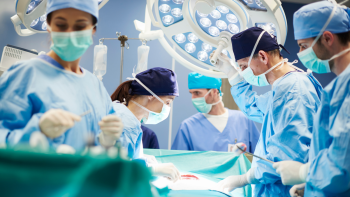Indirect inguinal hernia, causes, symptoms and treatment

- Interesting facts about Indirect Inguinal Hernia
- What is an inguinal hernia?
- What types of inguinal hernias are there?
- What are the causes of an indirect inguinal hernia?
- What are the symptoms of an indirect inguinal hernia?
- What is the treatment of an indirect inguinal hernia?
Interesting facts about Indirect Inguinal Hernia
Indirect inguinal hernias are hernias that appear in the lower part of the pubis, near the scrotum in men, mainly due to problems of weakness in the lower part of the pelvic-abdominal wall.
The attribute of indirect inguinal hernias is related to the classification of inguinal hernias based on an anatomical point of view.

Do you need inguinal hernia surgery?
Request a free and immediate appointment with our specialists
- Indirect inguinal hernias refer to the formation of a hernia in the lower pubic area near the scrotum.
- There are several classifications of inguinal hernias, the classification of indirect inguinal hernia being from an anatomical point of view.
- The only solution to an indirect inguinal hernia is an inguinal hernia operation, either laparoscopic or open.
What is an inguinal hernia?
Inguinal hernia is the protrusion or outpouching of the contents or fat from the inside of the abdomen through one of the holes that make up the inguinal canal.

The inguinal canal is a region of the abdomen located in the lower, lateral part of the abdomen. It corresponds to the groyne area in both men and women. The inguinal canal runs between the highest region of the pelvis to the centre of the pelvis at its lowest point, the pubic region.
Within the inguinal canal are two openings through which blood vessels, nerve endings and the spermatic cord in men and the round ligament in women pass. These two orifices are called the superficial inguinal ring and the deep inguinal ring and are the areas through which abdominal contents will protrude and exit, forming inguinal hernias.
Inguinal hernias are visible to the naked eye as the appearance of a bulge in the groyne region of patients suffering from inguinal hernias. Internally, they may be lined by a hernial sac or contain only fatty tissue.
A hernia sac is a lining of tissue inside the abdomen that surrounds the abdominal structures that protrude or protrude through the hernia hole.
What types of inguinal hernias are there?
Inguinal hernias can be classified in various ways depending on the medical point of view we wish to emphasise. In this way, inguinal hernias can be classified according to the symptoms they produce:
- Reducible inguinal hernia: a type of hernia that can protrude or protrude through the hernial foramen but can normally be reduced, i.e. it can be pushed back into the abdominal cavity again.
- Incoercible inguinal hernia: An inguinal hernia that protrudes again each time it is attempted to be reduced.
- Incarcerated inguinal hernia: an inguinal hernia that is unable to reduce into the abdomen but does not cause injury to the contents of the hernia.
- Strangulated inguinal hernia: a hernia that is not able to reduce once it has come out of the hernial hole but suffers damage to the inside of the hernia tissue due to problems with blood circulation, which can lead to ischaemia or infarction of the herniated tissue and even necrosis, which will require emergency surgery.
- Inguino-scrotal hernia: This type of inguinal hernia is the one whose content goes down to the inside of the scrotum in male patients.

Do you need surgery to repair an inguinal hernia?
Request a free and immediate appointment with our specialists
Inguinal hernias can be classified according to the primary causes of their appearance. In this sense we can classify inguinal hernias as follows:
- Congenital: hernias that are present from birth.
- Acquired: Hernias that occur during the development of human beings without a clear or defined cause.
- Post-surgical: These are recurrent inguinal hernias that appear as a result of a previous surgical intervention, taking advantage of the weaknesses of the muscular wall secondary to the operation itself.
- Traumatic: This type of inguinal hernia is due to trauma to the inguinal region that causes the hernia sac to come out through one of the natural orifices or from one created by the trauma itself.

From an anatomical point of view, inguinal hernias can be divided into:
- Direct inguinal hernia: an inguinal hernia that protrudes or appears through the defect in the abdominal wall.
- Indirect inguinal hernia: an inguinal hernia that protrudes and appears through the internal inguinal orifice and enters the inguinal canal.
- Mixed inguinal hernia: an inguinal hernia that has elements of the two previous groups.
What are the causes of an indirect inguinal hernia?
The causes of an indirect inguinal hernia are varied and multifactorial. In the vast majority of cases it is very difficult to specify and narrow down a specific cause related to the appearance of an indirect inguinal hernia.

In different studies and works that seek to study the origin of indirect inguinal hernias, only a few risk factors that predispose to the formation of indirect inguinal hernias have been established.
The most prominent of these are:
- Tobacco: The relationship between tobacco use and abuse in patients, both men and women, is one of the risk factors that most certainly predispose to this type of indirect inguinal hernia. This risk relationship does not imply that patients who smoke necessarily have indirect inguinal hernias, although it does favour their appearance.
- Family history of hernia: There seems to be a clear genetic component in families with indirect inguinal hernias in their parents.
- Previous surgery such as appendectomy and/or open radical prostatectomy.
- Chronic renal insufficiency.
- Long-term heavy work.
- Chronic obstructive pulmonary disease
What are the symptoms of an indirect inguinal hernia?
An indirect inguinal hernia is usually detected and diagnosed by the presence of a bulge in the lower groyne area very close to the scrotum in men and the pubic region in women.
This lump is generally and in most cases painless, although it is possible that during specific physical exertion it may increase in size. In many cases, the lump that the patient notices can appear and disappear several times a day or remain in this state for weeks and months.

Do you need inguinal hernia surgery?
Request a free and immediate appointment with our specialists in General surgery
When a patient with an indirect inguinal hernia has a hernia that is not able to reduce on its own, there may be a number of symptoms or signs.
The main ones are heaviness in the lower abdomen, discomfort or pain when moving around, increased frequency of urination and the possibility that the hernia may suffer internal damage due to alterations in its vascularisation and may produce an episode of ischaemia inside the hernia sac.
This type of hernia, as explained above, is an indirect strangulated inguinal hernia.
What is the treatment of an indirect inguinal hernia?
The treatment for the definitive resolution of inguinal hernias, whether indirect or of whatever type, must always be surgical.
Once there is a weakness in the abdominal wall that allows part of the abdominal contents (forming the hernial sac, as explained above) to protrude or come out into the skin, it is impossible for it to reduce and close on its own and surgery will always be necessary if we want to solve this weakness in the wall permanently.
The two main types of surgery usually performed for the repair of an indirect inguinal hernia are herniorrhaphy or hernioplasty.
The difference between each is the possibility of implanting a mesh of synthetic tissue to cover the hernia sac outlet (in the case of hernioplasty) once the indirect inguinal hernia has been reduced, or suturing the hernia sac outlet with surgical thread in the case of herniorrhaphy.
The choice of one type of intervention or the other depends on the size of the hernia and hernia foramen and the characteristics of each patient.

Do you need surgery to repair an inguinal hernia?
Request a free and immediate appointment with our specialists
Medical disclaimer: All the published content in Operarme is intended to disseminate reliable medical information to the general public, and is reviewed by healthcare professionals. In any case should this information be used to perform a diagnosis, indicate a treatment, or replace the medical assessment of a professional in a face to face consultation. Find more information in the links below:

